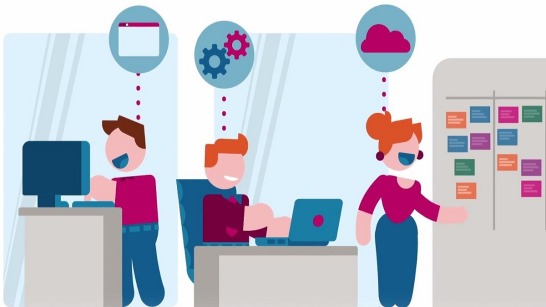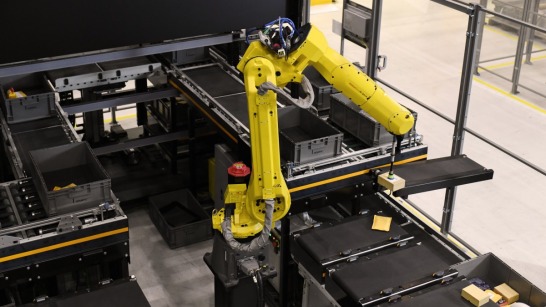For Oosterhuis and his team, the development of the virtual facility platform has been a breakthrough in terms of what KION Group can now offer the industry. According to Dr. Kelly Bartlett, Senior Product Owner for Virtual Facility Development, “Our customers realize a significant benefit in that we can identify and mitigate risk earlier in the development process. Customers can give us requirements and workflows specific to their facility and then Dematic iQ Virtual provides the capability to validate their customized software solution before go-live.”
Another significant benefit is that it has built-in capabilities to validate and assess the functionality of warehouse control system (WCS) and warehouse execution system (WES) to handle scenarios when some areas in the facility may not be working optimally. What happens when a customer has a day when some manual pickers do not come to work; how exactly does the software handle this situation? The ability to effectively simulate these types of scenarios with the virtual model connected to Dematic’s WCS and WES platforms including third-party systems enables R&D to design and implement more robust software.
How did it happen that a young team of software developers based in Waterloo, Ontario – Canada’s answer to Silicon Valley – hatched this groundbreaking technology? By developing a team with a diverse set of technical abilities and then focusing them on building a facility emulation system that did not exist within the industry. Next, they harnessed the power of advanced gaming technologies to create a flexible and scalable platform.
According to Oosterhuis, “We needed to be able to simulate a sophisticated pouch system which has over 300,000 moving pouches and can generate roughly 42,000 messages per second, we are also working on ‘garment on hanger’ systems and KION’s advanced AGV systems.” Another complexity is that some of the newer sites are over 140,000 square meters (1,500,000 square feet). A site in Dubai, UAE utilizes more than 50 Dematic multi-shuttle systems, while another in the US has more than 20 kilometers of conveyor. These new challenges screamed at the need to simulate these mega-complexes and validate the complex workflows early in the project lifecycle. Switching to a platform based on gaming technologies resolved those scalability issues. With the scale and complexity of customer systems increasing, investment in the platform continues.
The next ingredient thrown into the mix? Dr. Bartlett indicates that while the KION Group has the industry benchmark for facility simulation, “we see many opportunities emerging as we evolve towards integrating AI into our Industry 4.0 platform.” According to Bartlett, the digital twin software is one of three software pillars that “will drive our solution to new levels of dynamic adaptivity within the WCS and WES space. What we are currently developing will help take productivity and efficiency within the warehouse to the next level.”
Not only does Dematic iQ Virtual help various teams around the world at the KION Group to validate customized solutions, but customers are also now more engaged in the agile development of the software solution. They can see the progress being made as it is being developed. It feels more collaborative on both sides of the project.
Added Oosterhuis: “It is also really interesting that due to the visual aspect of the emulation brought about by the gaming factor in the solution, we can now address a greater range of individuals within a customer’s organization because it is less conceptual and more realistic on so many levels.” He also reported that several customers who have seen the software have told him and his team that “it is the best facility simulation platform available.”
After taking four years to develop, the software professionals in Ontario have reason to be proud: their product is being leveraged in sales processes at Dematic, and, last year alone the platform was used to validate functional requirements for 14 facility deployments. So, where do they go from here? An enthusiastic Oosterhuis responds, “Our virtual facility is perfectly suited to be used with artificial intelligence, and if we can leverage the power of AI, we can start making algorithms which go way beyond where we are now!”

